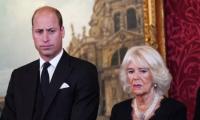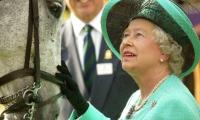ISLAMABAD: Pakistan’s population growth peaked at 2.55 percent, the highest in the South Asian region, with Balochistan topping the list at 3.2 percent, according to the Seventh Population and Housing Census.
“The current population growth rate of 2.55 percent is the highest in the region and among the top 30 countries in the world with a high growth rate,” stated the findings of the Census launched by Federal Minister for Planning Ahsan Iqbal on Thursday. The Seventh Population and Housing Census was conducted and launched by the Pakistan Bureau of Statistics (PBS).
Only 27 countries in the world, mostly in sub-Saharan Africa, have growth rates higher than Pakistan’s. In terms of population growth rate, Pakistan ranks 191st globally. It is pertinent to mention that if this growth rate persists, Pakistan’s population will double by 2050.
The average household size in Pakistan is 6.30. Khyber Pakhtunkhwa has the highest household size of 6.95 among all the provinces.
Ahsan Iqbal expressed concern over the increasing population growth, warning that if proper actions were not taken, the population will double by 2047. He said that it was now time to accelerate efforts to control the population and apply brakes. The country has reached a critical point where missing this opportunity will be a historical note.
The census results show that the majority of the Pakistani population is young. Notably, 79% of the population is under 40 years old. Specifically, 40.56% of the population is under 15 years old, 26% is between 15 and 29 years old, and 79% is below 40 years old.
The age pyramid and population distribution by age group reveal that Pakistan has the highest percentage of youth, who can play a pivotal role in the country’s development and prosperity through quality education and emerging skills. The rural population is 61.12%, while 39% live in urban areas. KP has the lowest urban population at 15%, and Sindh has the highest at 54%, followed by Punjab at 52% and Balochistan at 31%. There are 2.12 million foreign nationals living in Pakistan, with the highest percentage being Afghans at 90.47%, predominantly residing in KP.
The major religion in Pakistan is Islam, with Muslims making up 96.35% of the population, followed by Hindus at 1.61%, Christians at 1.37% and Scheduled Castes at 0.56%. The total minority population in Pakistan is 8.7 million, with 44.09% Hindus and 37.63% Christians. In Sindh, the Hindu population is 3.34 million, with 64.87% of minorities residing in the province. The total minority population in KP is 3.5 million, with 87.07% being Hindus.
There are 104.15 million literate people in Pakistan aged 10 years and older, making up 61% of the total population. The highest literacy rate is in Islamabad at 84%, followed by Punjab at 66%, Sindh at 58%, KP at 51%, and Balochistan at 42%. There are 25.37 million people aged 5-16 who are out of school.
Out-of-school children constitute 36% of this age group in Pakistan. The percentage is highest in Balochistan at 58%, followed by Sindh at 46%, KP at 37%, and Punjab at 27%. The top five districts with the highest numbers of out-of-school children are Orakzai, Bajaur, Torghar, Sherani, and Qilla Abdullah.
The major source of cooking fuel in Pakistan is firewood, with a 53% share, followed by gas (LNG and LPG) at 42%. In KP, 72% of households use firewood, followed by 70% in Balochistan, 50% in Punjab and 45% in Sindh.
The main source of lighting in Pakistan is electricity, with an 84% share, followed by solar energy at 8%. In Punjab, 95% of households use electricity, while in Balochistan 26% of households use solar energy for lighting, the highest among all the provinces.
Motor pumps are the main source of drinking water for 46.07% of the population, while 6.38% use filtration plants. In Punjab, 58% of households use motor pumps, while in Sindh, 46% use tap water. Pukka households constitute 67% of the total, semi-pukka 13%, and kutcha 20% of households in Pakistan.
There are a total of 22,331 transgender people in Pakistan or 0.008 percent of the total population of the country. There are 124.324 million males and 117.154 million females, or 51.48 percent and 48.51 percent, respectively.







